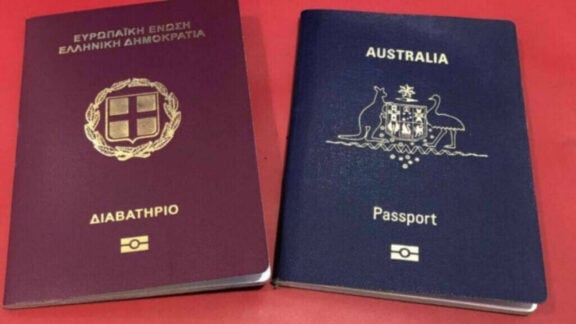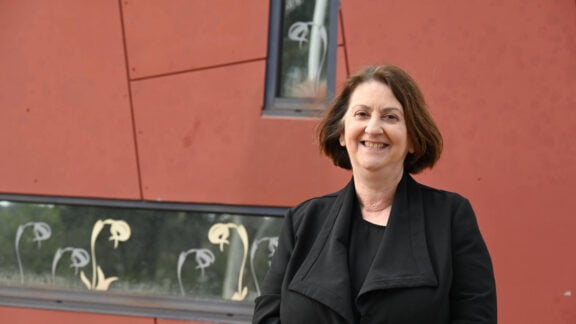COVID-19 may pose a threat to the physical health of humans but its threat to our economic lives may be just as devastating.
The economic prognosis for Australia after the lifting of the COVID-19 restrictions is not looking good according to experts which Neos Kosmos spoke with. The fear is that the economy is set to experience a downturn the like of which was only experienced in the Great Depression of the 1930s.
In his update on the Reserve Bank’s latest policy package the Governor of the Reserve Bank of Australia, Philip Lowe, said on Tuesday, 21 April, that “economic forecasting was difficult at the best of times. It is even harder at times like this when are experiencing a once-in-a-lifetime event.
“Given this, I don’t think it makes sense at the moment to focus on forecasts to the nearest decimal point, as we often do. Instead, I would like to focus on two broad issues: the immediate outlook for the economy; and the nature and speed of the recovery.”
Mr Lowe said the cost of the efforts to contain the virus has cut back on normal activities which means no jobs or incomes from these activities as well as a high level of uncertainty about the future that is holding back spending and investment.
READ MORE: Homeless support services under strain during coronavirus pandemic
“The unemployment rate would have been much higher than this without the government’s JobKeeper wage subsidy,” said Mr Low.
“We can be confident that our economy will bounce back and that we will see it recover. We need to remember that once the virus is satisfactorily contained, all those factors that have made Australia such a successful and prosperous country will still be there.”
It’s not all gloom
Stephen Koukoulas the Managing Director of Market Economics, former chief economist of CitiBank and who also served as an economic adviser to Australia’s Prime Minister Julia Gillard, said that the country was going through tough times but that the Reserve Bank’s analysis on 21 April showed that “there was cautious grounds for optimism that the economy will recover when the restrictions are lifted.”.
“Interest rates will stay a the very low levels they are currently until the economy begins to recover. It could months to years before the interest rates go up which would be a good sign that the economy is recovering.”
He said that the Victorian government figures were for a worst-case scenario and that seeking a $24.5billion loan the state government was looking to support its economy.

Some states to suffer more
Dr Sam Tsiaplias, a Senior Research Fellow Melbourne Institute: Applied Economic and Social Research at the University of Melbourne said the Australian economy would decline significantly in the June and September quarters with Victoria and New South Wales being the hardest hit.
With the spread of the COVID-19 virus appearing to be under control, he cautioned for a gradual approach to lifting restrictions.
“The issue with lifting the COVID-19 measures is the potential for infection rates to increase dramatically. If this happens there may be a greater economic cost associated with lifting these measures rather than retaining them. It is more sensible, for both health and economic reasons, to gradually lift the measures in a staged and cautious manner,” Dr Tsiaplias said, adding that the federal and state governments’ stimulus packages were alleviating some of the job losses.
“Many of the measures are tied to the wages and salaries paid by employers in a conscious effort to retain employees. These JobKeeper subsidy and JobSeeker payments will also help in reducing financial stress, at least for the median household. The measures, however, will not prevent a severe economic downturn at least for 2020, with a recession effectively guaranteed,” Dr Tsiaplias said.
On a world scale, Professor of Finance and the University of Liverpool Costas Milas said in an article appearing on The Conversation website that there was a wide disparity in forecasts on how the COVID-19 pandemic would affect the world economy as a whole.
READ MORE: How to avoid a coronavirus debt crisis? Issue a new type of government bonds linked to GDP
“Yet if we cut through today’s forecasts, two things appear certain. First, the deeper the recession, the longer it will take to recover. It’s basic mathematics that a recession of 10 per cent in 2020 will require 11.1 per cent growth in 2021 for GDP to return to its pre-coronavirus level,” Professor Milas wrote.
“Second, the heavy government spending to stave off the worst lockdown effects will balloon debt levels and fiscal deficits. Eurozone debt as a proportion of GDP looks to be heading north of 100 per cent, for instance, with the likes of Italy and Greece facing much worse.”
He said government would need to be very careful in how they would pay back their debts and suggested one way would be to issue GDP-linked bonds.
“Wealthier countries should take the lead in issuing these bonds. And the more countries that issue them, the more the premiums would fall everywhere, since investors could hedge their bets by exposing themselves to multiple countries’ GDP at the same time” Professor Milas advised.
♦ Dr Tsiaplas advised that households should visit the DSS website to make sure they are up to date on the type of financial support the federal government is currently providing: https://www.dss.gov.au/about-the-department/coronavirus-covid-19-information-and-support










